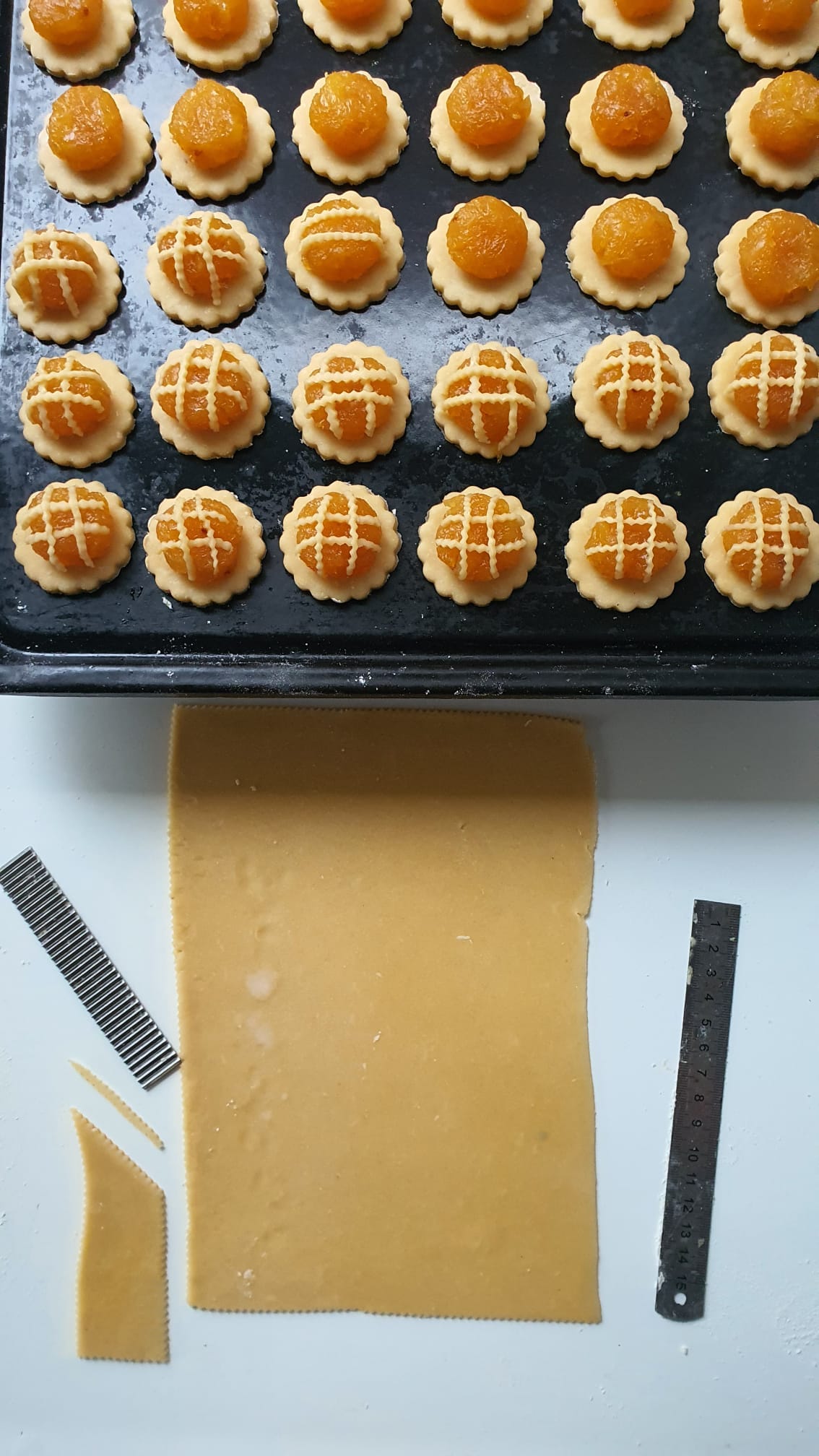The beautiful thing about writing a newsletter, compared to a cookbook (or anything in print for that matter), is that you get to tinker and refine recipes over time, whittling them down until they inch closer and closer your platonic ideal. As I’ve mentioned several times before on this newsletter, I don’t come from a family that enjoys much homemade sweets at home. I don’t ever recall my mom baking a single cake, cookie, or kueh when I was growing up. If there were homemade desserts, they were more stove-based and barely sweetened, such as green bean soup or fu chok tong sui (tofu sticks and gingko sweet soup).
The pineapple tarts that I enjoyed every Lunar New Year were usually store-bought and I never quite got the fuss; the jam was always cloyingly sweet and the pastry so dry that it would raise a tickle in my throat after I’ve had a handful. The first time I baked pineapple tarts at home, I was bowled over by how much complexity the homemade jam could accomodate (storebought jam usually omits the pandan and spices and comes with an inordinate amount of sugar), and how heartbreakingly tender the pastry could be without commercial concerns of how well the cookies would transport. Now that I’m into my sixth year of making these, I’m convinced that pineapple tarts are some of the most impressive and delicious cookies you can make at home, and one of those food items where the homemade definitely trumps what’s store-bought.
I have already written a four-part pineapple tart deep dive two years ago, and while many have baked the tarts with success, some struggled with the crumbly dough. I was also keen to try baking some open-faced lattice tarts, which I consider the non plus ultra of the pineapple tart world. The past week was spent hovering over pots of bubbling pineapple pulp and bending my back over fiddly pastry work, but I am very pleased to say that I now have a new and improved recipe that works just as well for closed tarts as it does for open-faced tarts.
Pineapple jam
Prepping pineapples: To make pineapple jam, you start by peeling, coring, and removing the eyes of your pineapples. I used to do this solely with a knife, but my mom brought me a tweezer dedicated for this purpose and it works like a dream.

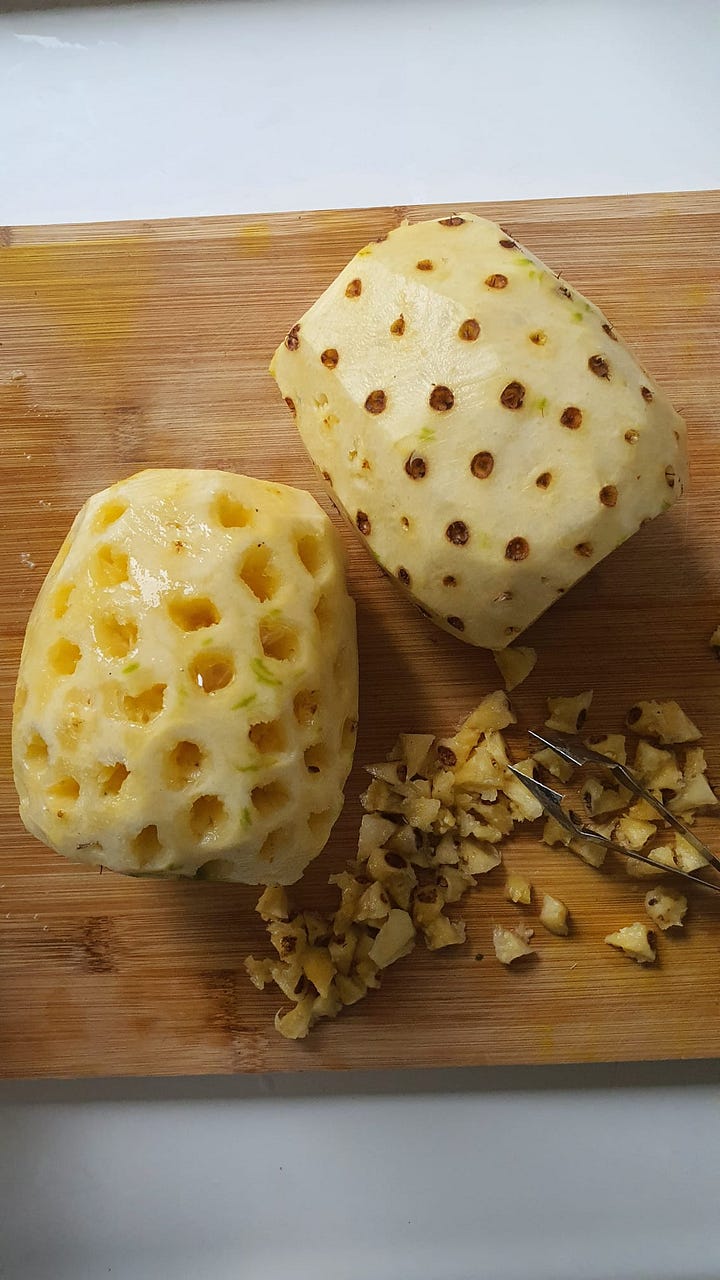
Turning pineapples to pulp: Good food and cooking is often conflated with complexity, but there’s so much beauty in keeping things simple. As a cookbook writer, writing elegant recipes is increasingly the goal. If a recipe has an additional step or ingredient that doesn’t make a discernible difference in the end-product, I winnow it. Previously, my method for preparing the jam was to coarsely grind and sieve the pulp (saving the juice to cook the pulp with later), before chopping it by hand. The idea is to preserve some texture in the pineapple instead of blending it to a smooth, homogenous pulp. Now I’ve seen the light. The best way to prep pineapples for jam is to coarsely grate it on a box grater. There’s little mess, involves less effort than you think, and you get exquisite, long strands of pineapple fibre in the end result.
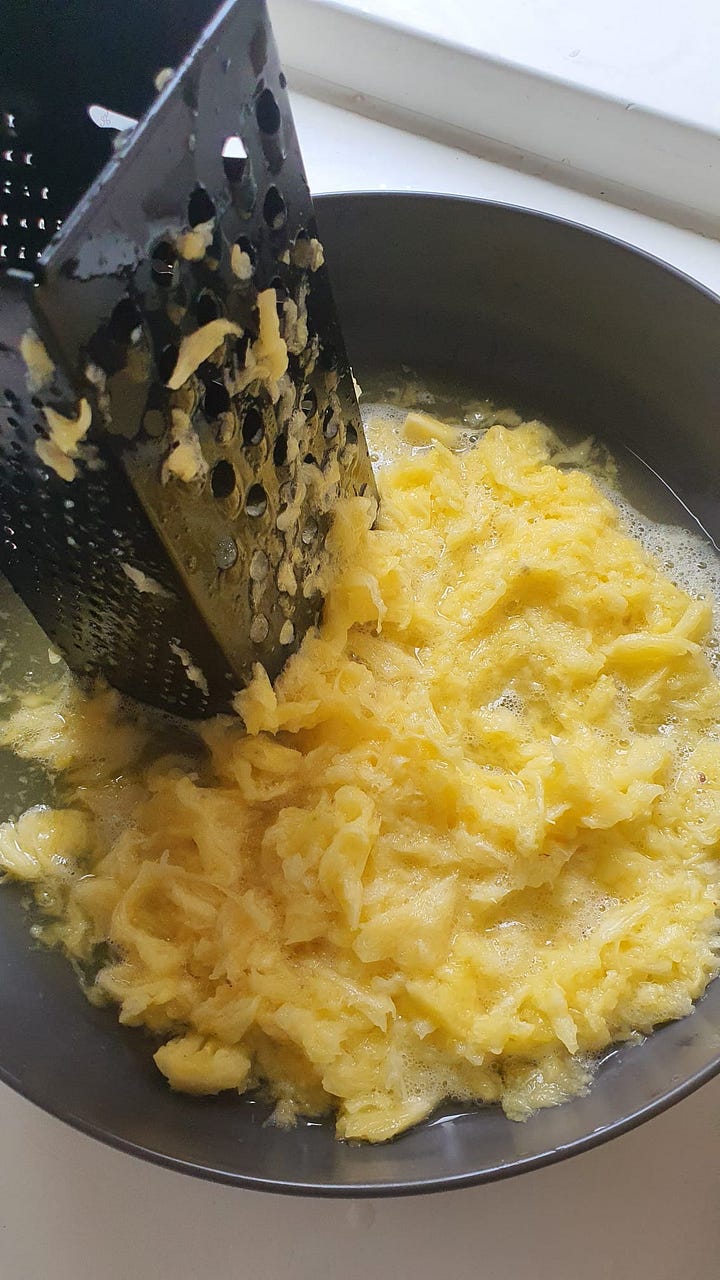

Turning pineapple pulp to jam: There are two stages to making pineapple jam - first, allowing the pineapple juice to evaporate so that what’s left is solely pulp; second, caramelising the pulp. How long it takes to make pineapple jam depends on how much juice there is in the pot. Because of this, some cooks sieve the fresh pineapple pulp and drink/ discard the juice so that you jump straight to step two, but what you save in time, you lose in flavour.
I made a separate batch of jam with canned pineapples because the supermarket ran out of fresh pineapples. As canned pineapples come in chunks, you will likely have to put them through a blender or food processor. In the pictures below, you can see how smooth and homogenous the texture of the jam is compared to that made with coarsely grated fresh pineapple. Even though long strands of pineapple fibre is widely considered the hallmark of well-made pineapple jam in Singapore, a sign that the cook has taken the time to grate the fruit by hand, personally I think it comes down a matter of taste - just like a preference for smooth or chunky peanut butter. You’ll be surprised that the jam made with canned pineapples was actually really good flavour-wise! In fact, I might even prefer it because pineapples can be inconsistent in their tart-sweet balance; our fresh pineapples this year was a little too much on the tart side for my taste.


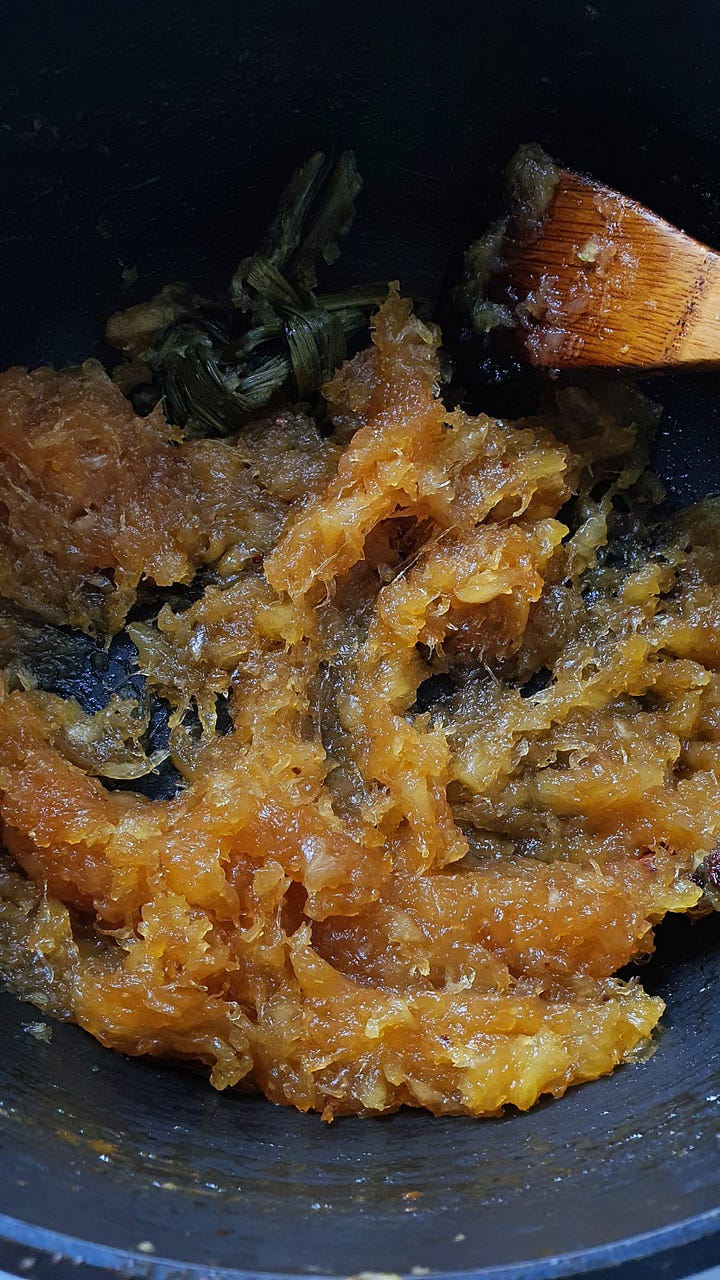

Pastry
There are two main textures of pineapple tart pastry in Singapore: firm and crisp, and melt-in-the-mouth. Each camp has its proponents, but the melt-in-the-mouth style of pastry is overwhelmingly popular in Singapore as far as I can tell. Both styles use the same ingredients (butter, egg, flour), but the way you manipulate these ingredients dramatically impact the end result. The melt-in-the-mouth texture comes down to the following factors:
High proportion of fat to flour: This leads to what is known as a ‘short’ pastry, which refers to cookies that have a sandy texture when baked. If you have ever baked sablé cookies, you’d be familiar with this quality. The only difference between a sablé recipe and most pineapple tart pastry recipes is a small amount of egg, mostly yollk, added to the latter.
Minimal gluten formation: Gluten is formed when water is introduced to the dough, allowing the proteins in flour to combine, leading to a firm or tough cookie. So, to produce a melt-in-the-mouth cookie, the butter is mixed directly with flour to coat the flour proteins in fat, and only just enough liquid is added to bind everything together. While testing recipes, I came across one that used a combination of egg yolks and water - it was the toughest, sturdiest pineapple tart I’d ever eaten, and not in a good way.
The pastry for pineapple tart is therefore made by mixing a large amount of butter into flour, then adding a tiny bit of egg (largely or exclusively yolks) for binding. But what technique is best? I’ve previously based my recipe off a flaky pie crust type of dough, starting by rubbing cold butter into the flour and adding just enough egg yolk to bind everything together. This produces a dough that is firm, on the dry side, and crumbly. This is good for pies where the cold butter helps to form flaky layers in the pastry, but not particularly great when you need to shape and wrap the dough around a filling. Starting with softened butter negates these problems, and you will have a soft, pliable dough that is a dream to work with. Another change that I’ve made to my recipe is to sweeten the dough with condensed milk instead of sugar, which adds a gentle undertow of toffee to the cookie.
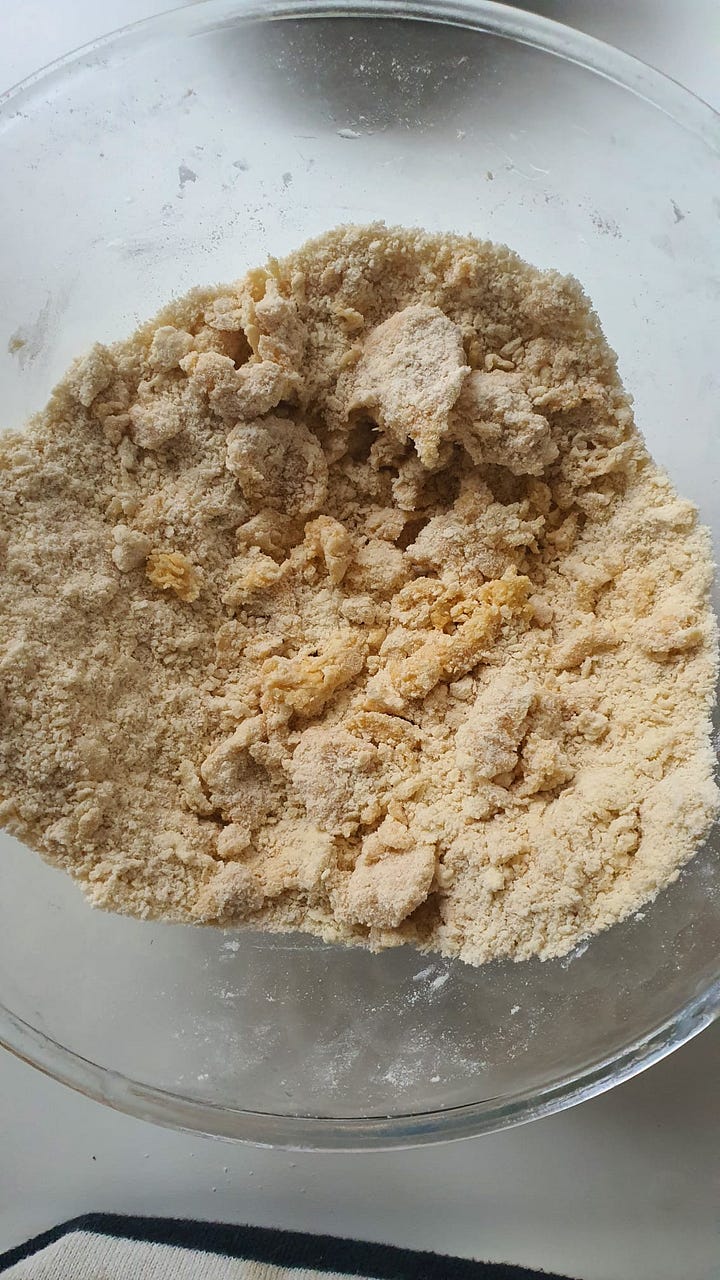

Open-faced tarts
Pineapple tart moulds - cutters that simultaneously cut, crimp, and form an indent in the centre of each round of cookie dough - are challenging to procure outside of Singapore, and even if you can find sellers online, you’d be paying a small fortune for them. The good news is that you don’t really need them to make gorgeous open-faced tarts. All you require is an ordinary scallop-edged round cookie cutter.
If you run out of jam before you run out of pastry, the leftover pastry can be used for decorative purposes. Simply roll it out thinly and cut thinner-than-a-toothpick strips with a knife or wavy cutter, and arrange them in a criss-cross fashion over the jam. It is said that the lattice decoration on pineapple tarts were originally a nod to the lattice tops on Dutch fruit tarts (not surprising since pineapple tarts are made and enjoyed in Indonesia, a former Dutch colony), a bit of trivia that makes these extra special for me since I now reside in the Netherlands 🥰
The buttery pastry makes up as much of the pineapple tart experience as the jam - and when you have melt-in-the-mouth, unbelievably tender cookie dough wrapped around chewy, caramelised orbs of pineapple jam, it is the perfect cookie. Can’t imagine it getting much better than this. If you’ve tried my recipe two years ago, do give these a go! Wex and I both think that this year’s tarts have improved upon last year’s. I might even stop tinkering in the years to come 😛
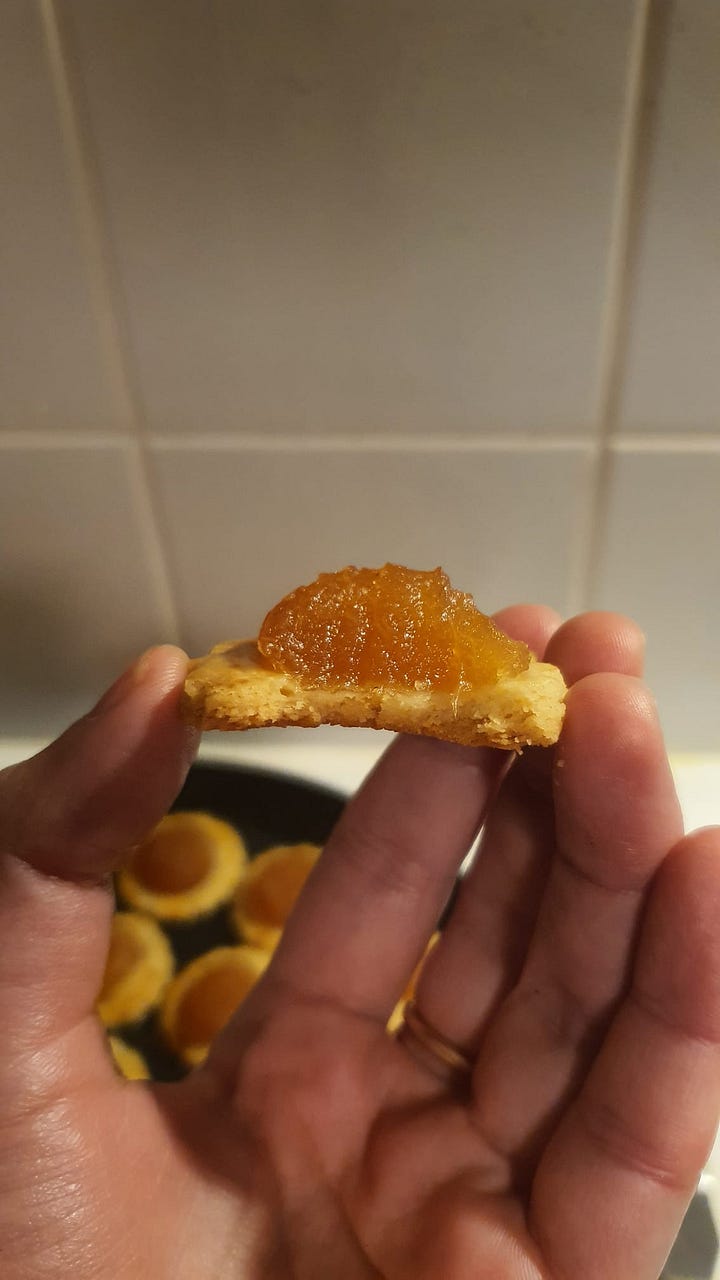
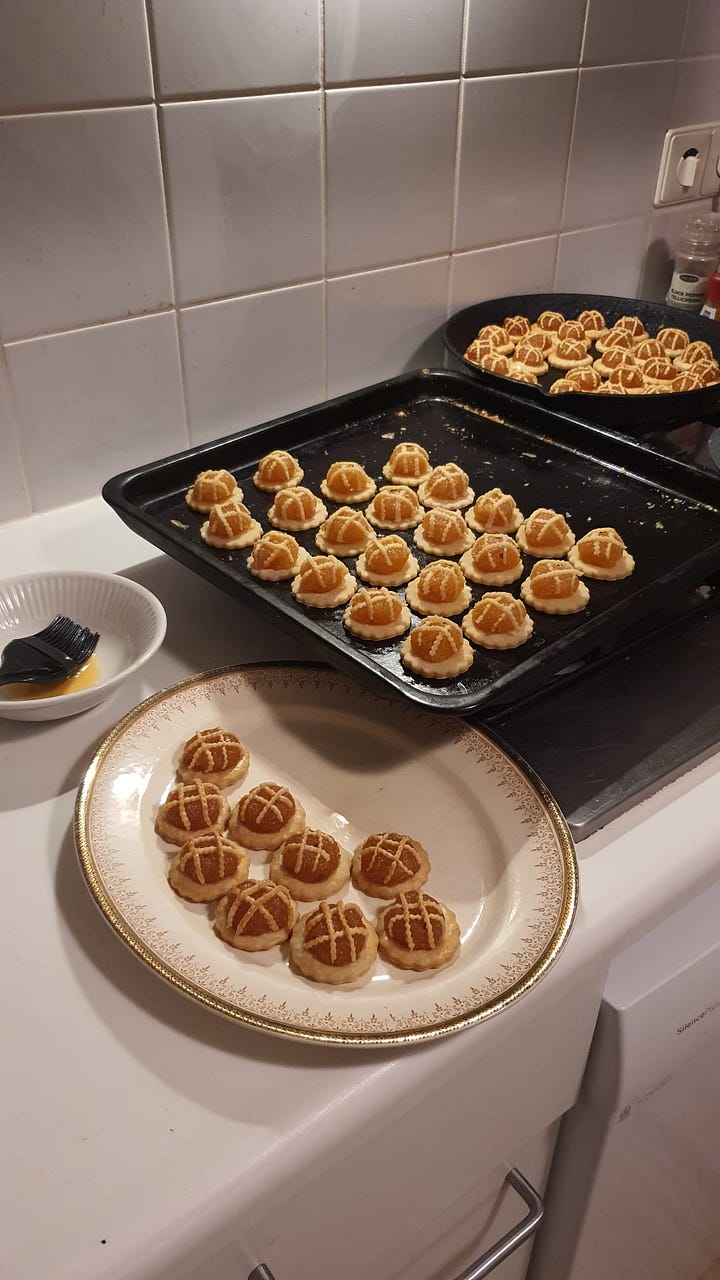
Pineapple Tarts
MAKES APPROXIMATELY 30 TO 40 COOKIES




